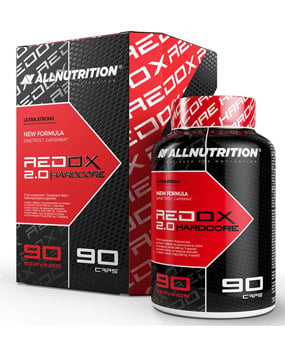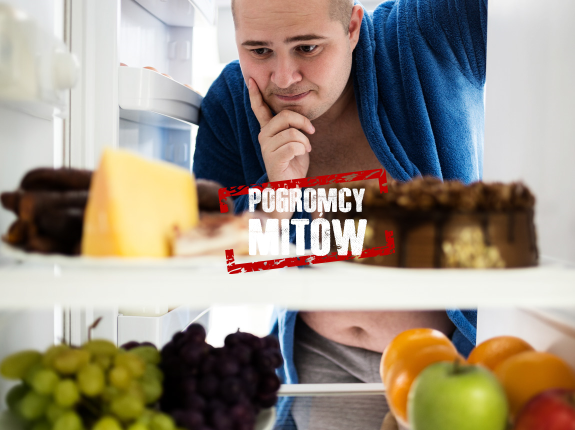'Waxy Maize wypełni twoje mięśnie glikogenem jak żaden inny suplement!'
'Badania wykazały, że Waxy Maize wykazują niską osmolalność, skutkiem czego szybko przechodzą przez żołądek. Dzięki temu Waxy Maize trafia 2 razy szybciej do twoich mięśni!'
...itd.
Ale czy to prawda?
KIlka slów wstępu
Skrobia woskowa moze pochodzic z wielu żródeł - np. z ryzu,jęczmienia,ziemniaka czy kukurydzy.
Waxy Maize Starch (WMS) - jest to skrobia z kukurydzy woskowej.
Skrobia z kukurydzy woskowej różni się od zwykłej kukurydzy tym, że jej ziarna zbudowane są głównie (niemal w 100%) z amylopektyny. Amylopektyna to długi łańcuch cząsteczki glukozy (zwanej też dekstrozą), od którego odchodzą łańcuchy poboczne. Skrobia ze zwykłej, standardowej kukurydzy również zbudowana jest głównie z amylopektyny, jednak zawiera też pokaźną ilość amylozy - która tak samo jest łańcuchem cząsteczek glukozy, ale pozbawionym rozgałęzień.
Nie raz WMS jest porownywana do Vitargo.
Dlaczego?
(nie będę sie rozwodzil nad Vitargo)
Dlatego że Vitargo można uzyskać z WMS.
Więc zalety Vitargomozna przypisac WMS.
Nie za bardzo!!
Vitargo można pozyskać z WMS, ale też z ziemniaków, ryżu, pszenicy i innych źródeł, dlatego nawet jeśli WMS stanowi źródło, to jest zupełnie inną skrobią niż produkt końcowy.
Vitargo mozna pozyskac ze skrobi kukurydzy woskowej
ale
skrobia kukurydzy woskowej to nie to samo co Vitargo!
Sprzedawcy WMS przywłaszczyli sobie wyniki badań dla Vitargo, jakby obydwa produkty były tym samym źródłem węglowodanów.
Więc stąd się wziął mit - wyzszosc vitargo nad innymi formami:
Improved gastric emptying rate in humans of a unique glucose polymer with gel-forming properties.
METHOD: The rate of gastric emptying of two isoenergetic carbohydrate solutions with different osmolality and viscosity was determined using a double sampling gastric aspiration technique. Six healthy male subjects were studied on two occasions using approximately 550 ml of a solution containing 13.5% of carbohydrate either in the form of a mixture of monomeric glucose and short chain glucose oligomers (G-drink) or of long chain glucose polymers composed of 78% amylopectin and 22% amylose (C-drink).
RESULT: The half emptying time (t(1/2), median and range) for the viscous, markedly hypotonic (62 mosmol/kg) C-drink was faster (17.0 (6.2-31.4) min) than for the moderately hypertonic (336 mosmol/kg) G-drink (32.6 (25.2-40.7) min). The amount (median and range) of carbohydrate delivered to the small intestine was greater during the first 10 min after ingestion of C-drink (31.8 (15.8-55.9) g) than after ingestion of G-drink (14.3 (6.8-22.2) g). However, there was no difference in the blood glucose (P = 0.73) or serum insulin (P = 0.38) concentration at any time point after ingestion of the two test drinks.
CONCLUSION: The results of this study show that the carbohydrate present in C-drink, although it has the propensity to form a gel, empties from the stomach faster than that of an isoenergetic carbohydrate solution (G-drink) without potentiating increased circulating blood glucose or insulin levels.
http://www.ncbi.nlm.nih.gov/pubmed/11145284
Vitargo opuszcza zoladek 80% szybciej niz weglowodany proste w ciagu pierwszych 10 minut. Ponad polowa Vitargo opuscila zoladek przechodzac do jelit, w porównaniu napój glukozowy opuscil zoladek tylko w 20% w tym samym czasie.
Muscle glycogen resynthesis rate in humans after supplementation of drinks containing carbohydrates with low and high molecular masses.
The rate of muscle glycogen synthesis during 2 and 4 h of recovery after depletion by exercise was studied using two energy equivalent carbohydrate drinks, one containing a polyglucoside with a mean molecular mass of 500 000-700 000 (C drink), and one containing monomers and oligomers of glucose with a mean molecular mass of approximately 500 (G drink). The osmolality was 84 and 350 mosmol. l(-1), respectively. A group of 13 healthy well-trained men ingested the drinks after glycogen depleting exercise, one drink at each test occasion. The total amount of carbohydrates consumed was 300 g (4.2 g. kg(-1)) body mass given as 75 g in 500 ml water immediately after exercise and again 30, 60 ad 90-min post exercise. Blood glucose and insulin concentrations were recorded at rest and every 30 min throughout the 4-h recovery period. Muscle biopsies were obtained at the end of exercise and after 2 and 4 h of recovery. Mean muscle glycogen contents after exercise were 52.9 (SD 27.4) mmol glycosyl units. kg(-1) (dry mass) in the C group and 58.3 (SD 35.4) mmol glycosyl units. kg(-1) (dry mass) in the G group. Mean glycogen synthesis rate was significantly higher during the initial 2 h for the C drink compared to the G drink: 50.2 (SD 13.7) mmol. kg(-1) (dry mass). h(-1) in the C group and 29.9 (SD 12.5) mmol. kg(-1) (dry mass). h(-1) in the G group. During the last 2 h the mean synthesis rate was 18.8 (SD 33.3) and 23.3 (SD 22.4) mmol. kg(-1) (dry mass). h(-1) in the C and G group, respectively (n.s.). Mean blood glucose and insulin concentrations did not differ between the two drinks. Our data indicted that the osmolality of the carbohydrate drink may influence the rate of resynthesis of glycogen in muscle after its depletion by exercise.
http://www.ncbi.nlm.nih.gov/pubmed/10664095
Po dwóch godzinach zawartosc glikogenu w miesniach po spozyciu Vitargo byla wyzsza niz po spozyciu weglowodanów o niskiej masie czasteczkowej.
W dwie godziny po zakonczeniu wysilku,Vitargo uzupelnia glikogen 70% szybciej niz proste weglowodany
Ze względu na swoja budowę - producenci/sprzedawcy twierdza ze WMS szybko się wchłania,szybko opuszcza żołądek i tym samym szybko uzupelnia zapasy glikogenu.
Niektóry źródla twierdzily ze WMS uzupelnia glikogen 70-80% szybciej niz inne żródła węgli.
Ale wedlug wielu badań WMS okazało się wywierać tak wolny i stabilny wpływ na poziom glukozy i insuliny, że naukowcy mówią teraz, że są to węglowodany „wolnostrawne" lub „niskoglikemiczne".
Niestety większość badań nad WMS przeczy tym twierdzeniem - w najlpeszym przypadku stawiając WMS na równi z dextrozą czy maltodekstryną.
Nawet jakby tak bylo (jakby!) - to czy chodzi o to aby płacic za produkt który ma właściwości dextrozy 3-4 czy 5x wiecej?
Kilka badań:
The effects of pre-exercise starch ingestion on endurance performance.
This study compared the physiological responses and performance following the ingestion of a waxy starch (WS), resistant starch (RS), glucose (GL) and an artificially-sweetened placebo (PL) ingested prior to exercise. Ten college-age, male competitive cyclists completed four experimental protocols consisting of a 30 min isokinetic, self-paced performance ride preceded by 90 min of constant load cycling at 66% VO2max. Thirty min prior to exercise, they ingested 1 g.kg-1 body weight of GL, WS, RS, or PL At rest, GL elicited greater (p < 0.05) serum glucose and insulin responses than all other trials.
The mean total carbohydrate oxidation rates (CHOox) were higher (p < 0.05) during the GL, WS, and RS trials (2.59 +/- 0.13, 2.49 +/- 0.10, and 2.71 +/- 0.15 g.min-1, respectively) compared to PL (2.35 +/- 0.12 g.min-1). Subjects were able to complete more work (p < 0.05) during the performance ride when they ingested GL (434 +/- 25.2 kj) or WS (428 +/- 22.5 kj) compared to PL (403 +/- 35.1 kj). They also tended to produce more work with RS ingestion (418 +/- 31.4 kj), although this did not reach statistical significance (p < 0.09). These results indicate that preexercise CHO ingestion in the form of starch or glucose maintained higher rates of total carbohydrate oxidation during exercise and provided an ergogenic benefit during self-paced cycling.
http://www.ncbi.nlm.nih.gov/pubmed/8858409
4 grupom podawano:
-dekstrozę (GL)
-WMS (czyli 100-procentową amylopektynę), (WS)
-trudnowchłanialną skrobię (rodzaj skrobi niezbyt podatny na trawienie i absorpcję, zawierający w 70% amylozę, a 30% amylopektynę) (RS)
-placebo
30min przed 90min jazda na rowerze przyjmowali 1g produktu/kgmc
wyniki:
-spalanie glukozy bylo takie samo/podobne w grupie Gl,WS i RS - w grupie placebo najnizsze
-grupa GL mogla wykonac najwiecej pracy (434),pozniej grupa WS (421) w porownaniu do placebo (403)
-poziom glukozy i insuliny byl najwiekszy o grupu GL (3x wiekszy niz u WS)
The influence of starch structure on glycogen resynthesis and subsequent cycling performance
The present study was designed to evaluate the influence of starch structure on muscle glycogen resynthesis and cycling performance. Eight male cyclists (22 ± 1 yr) completed an exercise protocol (DP) to decrease vastus lateralis glycogen concentration. This exercise consisted of 60 min cycling at 75 % VO2max, followed by six 1-min sprints at ∼ 125% VO2max with 1 min rest intervals. In the 12 hr after the exercise each subject consumed - 3000 kcal (65:20:15 % carbohydrate, fat and protein). All of the carbohydrate (CHO) consumed was derived from one of four solutions: 1) glucose, 2) maltodextrin (glucose polymer), 3) waxy starch (100 % amylopectin), or 4) resistant starch (100 % amylose). Muscle biopsies were taken from the vastus lateralis muscle after DP and 24 hr later to determine glycogen concentrations. A 30 min cycling time trial (TT) was performed following the 24 hr r post-DP muscle biopsy to examine the influence of the feeding regimen on total work output. The post-DP glycogen concentrations were similar among the four trials, ranging from 220.3 ± 29.2 to 264.7 ± 48.3 mmol.kg-1 dry weight (d.w.) muscle. Twenty-four hours after DP, muscle glycogen concentration had increased less (p < 0.05) in the resistant starch trial (+ 90.8 ± 12.8 mmol.kg-1 d.w.) than in the glucose (+ 197.7 ± 31.6 mmol.kg-1 d.w.), maltodextrin (+ 136.7 ± 24.5 mmol.kg-1 d.w.) and waxy starch (+ 171.8 ± 37.1 mmol.kg-1 d.w.) trials. There were no differences in total work output during the TT, or blood lactate concentration immediately following the TT in any of the CHO trials. In summary, glycogen resynthesis was attenuated following ingestion of starch with a high amylose content, relative to amylopectin or glucose; however, short duration time trial performance was unaffected.
http://cat.inist.fr/?aModele=afficheN&cpsidt=3187369
8kolaryz po wyczerujacej glikogen jezdzie na rowerze mieli spozyc 3000kcal (60%ww,20%fat,15%bialko) w 4 grupach:
-glukoza (GL)
-maltodextryna (ML)
-waxy maize (WS)
-skrobia trudno wchłanialna (RS)
po biopsji okazalo sie ze poziom glikogenu jest podobny dla wszystkich grup (220 do 264mmol)
po kolejnych 24h poziom glikogenu byl najwieszky u grupy GL - 197.7
pozniej u grupy WS - 171.8
pozniej u grupy ML - 136.7
na koncu RS - 90.8
nie bylo istotnych roznic - ale lekką przewage uzyskala glukoza
Inverse association between the effect of carbohydrates on blood glucose and subsequent short-term food intake in young men
Design: Three experiments were conducted in which selected carbohydrates as 1255-kJ isovolumetric beverages were administered to young men after an overnight fast. Measurements of blood glucose and appetite were made at specified times during the next 60 min. Food intake was measured at 60 min.
Results: Glucose resulted in the highest glycemic response, which was followed, in order, by the responses to polycose, sucrose, amylopectin, a fructose-glucose mixture, and amylose. The high-glycemic-index preloads (glucose, polycose, and sucrose) resulted in lower mealtime energy intake during a test meal at 1 h, but the low-glycemic-index preloads (amylose, amylopectin, and a fructose-glucose mixture) did not. An inverse relation was observed between the blood glucose concentrations in the area under the curve and the subjective appetite (r = -0.23, P < 0.05) and food intake at 60 min (r = -0.24, P < 0.05).
Conclusions: Food intake and subjective appetite are inversely associated with blood glucose response in the 60 min after consumption of carbohydrates. Carbohydrates with a high glycemic index (glucose, polycose, and sucrose) suppress subjective appetite and food intake in the short term, but those with a low glycemic index (amylose and amylopectin) do not.
http://www.ajcn.org/content/76/5/1023.short
badano wplyw 8 produktow weglowodanowych:
-polimery glukozy
-amylopektyna
-skrobia kukurydziana o wysokiej zawartosci amylozy
-sacharozy
spozytych po nocnym poscie w ilosci 75g
wyniki:
-poziom glukozy po 15min:
glukoza: 3.19
amylopektyna: 1.11
amyloza; 0.39
sacharoza: 2.6
najwiekszy u glukozy,3x wiekszy niz w przypadku waxy maize
po 30minutach:
glukoza: 3.58
amylopektyna: 1.73
amyloza; 0.26
sacharoza: 3.16
najwiekszy u glukozy,ponad 2x wiekszy niz w przypadku waxy maize
Pole pow. pod krzywą glukozy (glucose AUC)

glukoza: 156.6
amylopektyna:73.35
amyloza; 18.19
sacharoza: 117.7
Consumption of the slow digesting starch waxy maize leads to blunted and sustained carbohydrate utilization but does not influence energy expenditure or appetite
Background: The postprandial metabolic and appetitive responses of waxy maize, a slow-digesting carbohydrate (CHO), are undocumented in humans and were examined in this study.
Methods: 12 young, physically fit men and women (age: 23 ± 1 y; BMI: 22.2 ± 0.7 kg/m2; physical activity: 556 ± 120 min/wk) consumed, on separate testing days, 50 g of available CHO as either fast-digesting maltodextrin (M) or waxy-maize starch (WM). Plasma glucose and insulin concentrations, whole body energy expenditure and appetite (hunger, fullness, and desire to eat) were measured over 4 h.
Results: Compared to M, WM led to lower postprandial glucose (1082 ± 151 vs. 2186 ± 262 mg/dL•240 min; p<0.001) and insulin (833 ±164 vs. 1628 ± 165 uU/mL•240 min; p<0.005) area under the curve during the 4 h period. These differences were driven by the blunted glucose response during the first hour (p<0.001) and the blunted insulin response during the first two hours (p<0.005) in WM. CHO utilization was lower after 1 h but higher after 4 h following WM vs. M. Composite CHO utilization over the entire 4 h period was not different between WM and M. No differences in energy expenditure or appetite were observed between WM vs. M.
Conclusion: These results support that waxy maize provides sustained glucose availability in young, physically fit adults.
http://www.fasebj.org/cgi/content/meeting_abstract/22/1_MeetingAbstracts/1089.2
badano poziom glukozy i insuliny u dwoch grup spozywajacych 50g:
-maltodekstryny
-waxy maize
wyniki:
po 4h poziom glukozy (AUC) wynosil
-maltodekstryna 2186
-waxy maize 1082 mg/dL
po 4h poziom insuliny (AUC) wynosil
-maltodekstryna 1628
-waxy maize 833uU/mL
cześc informacji pozyskana ze strony:
http://pl-pl.facebook.com/note.php?note_id=131634886892017
Zmieniony przez - solaros w dniu 2011-02-24 03:38:48
"Cóż jest trucizną?
Wszystko jest trucizną i nic nie jest trucizną, tylko dawka czyni, że dana substancja nie jest trucizną!".
BLOG: http://www.sfd.pl/t1033576.html


 Krzysztof Piekarz
Krzysztof Piekarz








